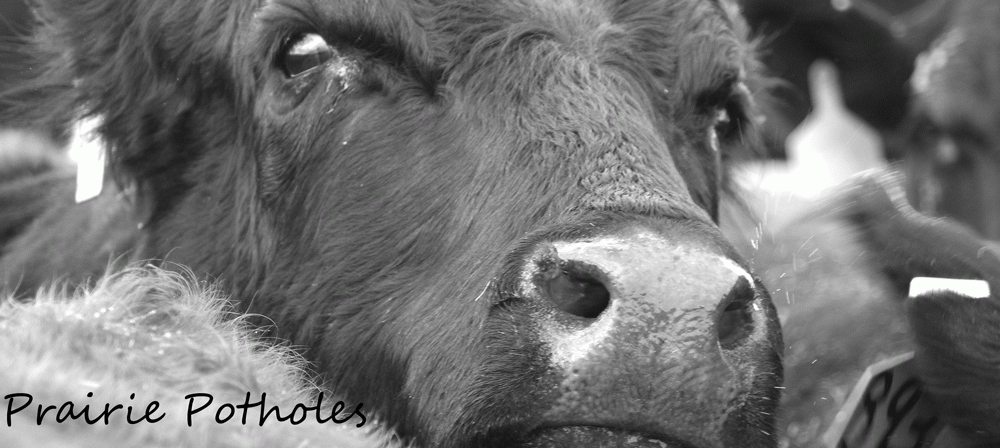As I was driving cross-country yesterday to pick Danish Cowboy up from his swathing duties, I came across an opportunity to mount my soapbox again. I haven't done this for a while, so bear with me. Eastern Montana is ranching and farming country. So what that means is that you will see native rangeland which has never been plowed where cattle typically graze, interspersed with cropland traditionally used for small grains such as wheat, barley or dryland corn. And THEN you have Conservation Reserve Program acreage as you see in the foreground above. Note the cropland strips off in the distance and the clearly changing land uses from one parcel to the next.
The Conservation Reserve Program is a federal government sponsored idea that began in the 1980s and has continued to the present day with subsequent farm bills. Actually, the whole concept of the CRP began in the 1930s with the idea of the soil bank. If you've been living in a cave and did not attend history class like a good little student, the 1930s brought about not only depression but massive drought and wind erosion in the midwest. Stories are told of dirt (soil) clouds traveling hundreds of miles and smothering large cities far removed from the farming regions. So the government started a land banking program wherein they paid farmers to plant their land back to permanent vegetation (rather than continue plowing) with the goal of reducing wind erosion losses.
It was an idea with fantastic intentions. Farming out here is not always a viable operation and parcels of land were plowed up that never should have been touched. Some soils just simply are not suitable for farming and would have been better left as native prairie. But they were plowed, and here we are.
So as this program evolved and became the modern day CRP, regulations also evolved, often spearheaded by program managers in the government who had never even visited the regions that they were making policy for. When the soil banking program was replaced by CRP (in large response due to the need for the government to restrict the amount of wheat that was being produced -- gotta love free market trading), an economic bubble was also bursting that threatened to put many farmers out business.
And so farmers across the mid-west jumped on the opportunity to have the government pay for cropland to be reseeded to permanent vegetation and then receive annual payments equal to approximately what they would net every year had they left the cropland in production. Just think of it: the government pays you to seed permanent grass, you don't have to farm or plow anything for the course of a 15 year contract, and you get paid. What a deal!
Now the government is threatening to allow all CRP contracts to expire. People who have large acreages of CRP generally don't have cows. And if they did, the fences are long since gone after many years of non-use. So the future for CRP? Farmers will be tempted to plow up the land again -- land that never should have been farmed and with that comes the risk of a repeat of the "dirty thirties" -- soil erosion on such a scale that we have not seen in decades. The soil doesn't do us very much good when it's lying on the bottom of the ocean. These kinds of lessons are hard to learn and it makes me really tired to think that we might have to learn them all over again. CRP is not a perfect program, but it's one that's pretty hard to get out of once you've started.




No comments:
Post a Comment